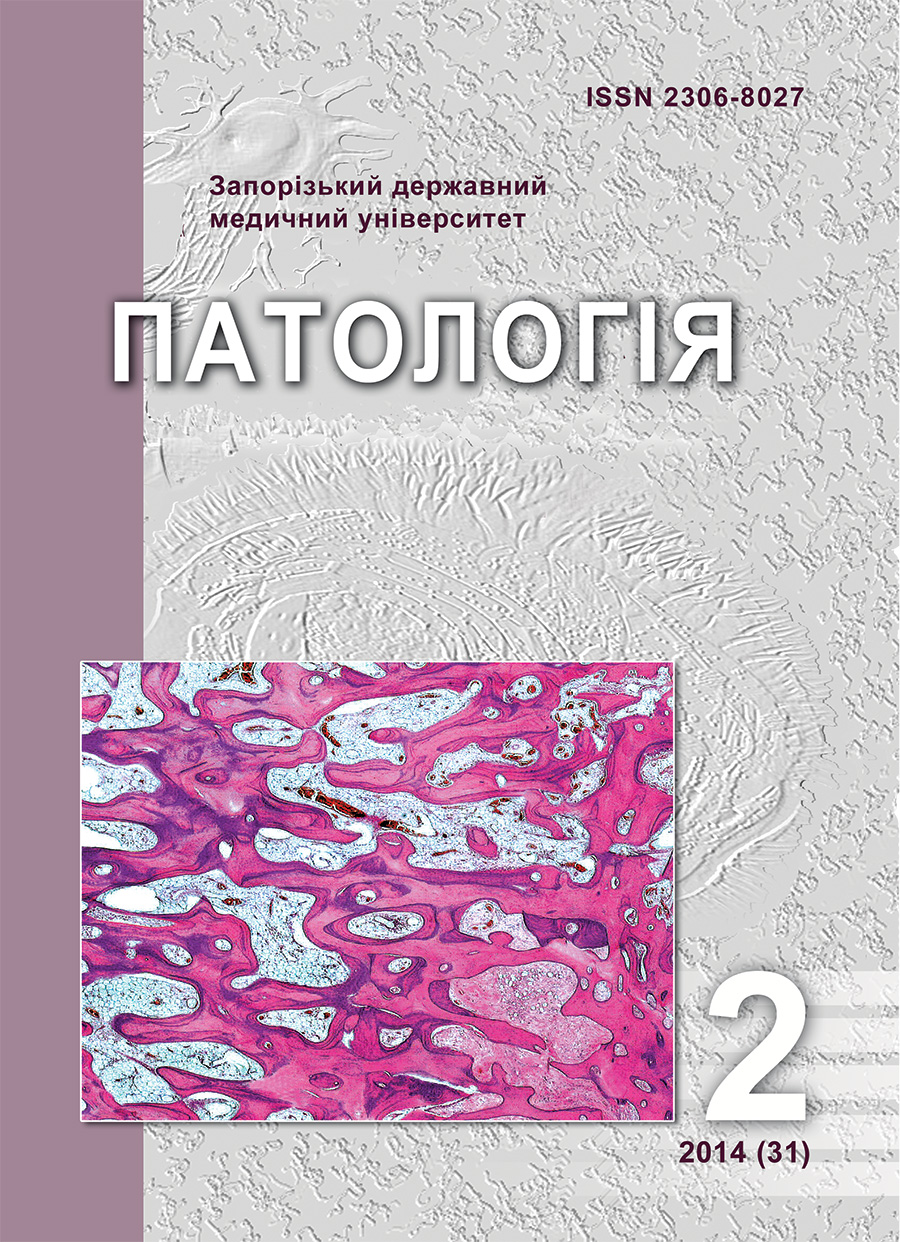Features of immune status of patients with infectious lesions of large skin folds
DOI:
https://doi.org/10.14739/2310-1237.2014.2.28596Keywords:
Immunity, Skin, Folds, Infection, Phagocyte, Immunoglobulin, CytokinesAbstract
Aim. To examine the features status of patients with infectious lesions of large skin folds.
Methods and results. In the study of the immune status of 80 patients with infectious lesions of large skin folds the following was identified: suppression of phagocytes, changes in the quantitative composition of the main populations and subpopulations of lymphocytes, characterized by T-cell deficiency on the background of an increase in CD19+ and CD16+, lower CD4+/CD8+, increase in immunoglobulin G and M, under normal indicators of IgA and significant increase in production of interleukin-10 and 12, which is evidence of hyperactivation of proinflammatory and anti-inflammatory mechanisms of the immune system.
Conclusion. The largest dissociation of the above parameters was observed in patients with mixed-forms.
References
Kuznetsova, Yu. K., & Sirmais, N. S. (2013) Lechenie mikst-infekcij kozhi [Treatment of mixed skin infections]. Vestnik dermatologii i venerologii, 5, 132–137. [in Russian].
Pritulo, O. A., & Prokhorov, D. V. (2010) Lechenie poverkhnostnykh mikozov gladkoj kozhi kremom «Jekzoderil» [Treatment of superficial mycoses of smooth skin with a cream «Exoderil»]. Ukrainskyi zhurnal dermatolohii, venerolohii, kosmetolohii, 2(37), 77–79. [in Ukrainian].
Cyrkunov, L. P. (2001) Kozhnye simptomy v diagnostike somaticheskikh zabolevaij [Skin symptoms in the diagnosis of somatic disease]. Moscow: Znanie. [in Russian].
Belousova, Т. А., Goryachkina, M. A., & Gryazeva, T. M. (2011) Principy naruzhnoj terapii dermatozov sochetannoj e`tiologii [Principles of topical treatment of dermatoses of combined etiology]. Consilium Medicum. Dermatologiyya, 2, 18–22. [in Russian].
Kutasevich, Ya. F., & Zimina, T. V. (2004) Bakterial'nye oslozhneniya mikozov stop [The bacterial complications of tinea pedis]. Dermatovenerologiya. Kosmetologiya. Seksopatologiya, 1–2(7), 27–29. [in Ukrainian].
Svyatenko, T. V., Dudnik, O. S., Frankenberg, A. A. (2009) Dermatozy, oslozjnennye vtorichnoj infekciej: akcent na naruzhnuyu terapiyu [Dermatoses complicated by secondary infection: focus on topical treatment]. Dermatovenerologiya. Kosmetologiya. Seksopatologiya, 1–2(12), 268–272. [in Ukrainian].
Ashman, R. (2005) Production and function of cytokines in natural and acquired immunity to Candida albicans infection. J. Microbiol. Rev, 59(4), 646–672.
Janniger, C. K., Schwartz, R. A., Szepietowski, J. C., & Reich, A. (2005) Intertrigo and common secondary skin infections. Am. Fam. Physician, 72(5), 833–838.
Kupper, T. S., & Fuhlbrigge, R. C. (2004) Immune surveillance in the skin: mechanisms and clinical consequences. Nat. Rev. Immunol., 7, 211–222. doi:10.1038/nri1310.
Downloads
How to Cite
Issue
Section
License
Authors who publish with this journal agree to the following terms:- Authors retain copyright and grant the journal right of first publication with the work simultaneously licensed under a Creative Commons Attribution License that allows others to share the work with an acknowledgement of the work's authorship and initial publication in this journal.

- Authors are able to enter into separate, additional contractual arrangements for the non-exclusive distribution of the journal's published version of the work (e.g., post it to an institutional repository or publish it in a book), with an acknowledgement of its initial publication in this journal.
- Authors are permitted and encouraged to post their work online (e.g., in institutional repositories or on their website) prior to and during the submission process, as it can lead to productive exchanges, as well as earlier and greater citation of published work (SeeThe Effect of Open Access).

